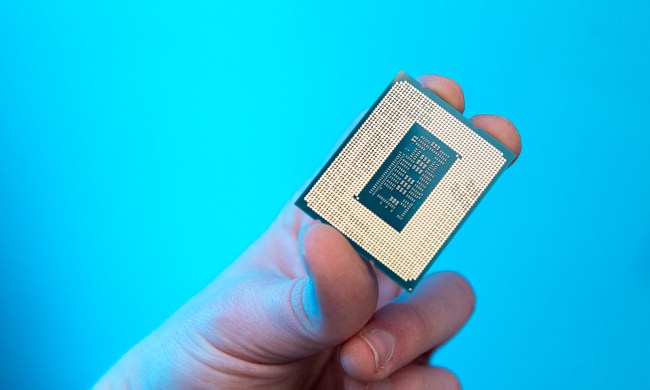Intel has made a big deal about the efficiency of its upcoming Arrow Lake CPUs, which are looking to earn a spot among the best processors when they release later this week. Some early benchmark results HXL on X (formerly Twitter) show that the CPUs can still draw a ton of power if you stray from Intel’s default power settings, however.
The post, which you can see below, shows the Core Ultra 9 285K peaking at 370 watts of power draw in Cinebench R23’s multi-core test. The CPU itself is blacked-out, but you can tell it’s the Core Ultra 9 285K from the 24 cores picked up by Cinebench. The Core Ultra 9 285K has a maximum turbo power of 250W, according to Intel, and a base power of 125W.
5.6+4.9
Source: QQ pic.twitter.com/YuY1l0z92K
— HXL (@9550pro) October 21, 2024
There’s a little more to the story than the maximum power draw, however. As you can see from the result, the CPU reached 46,289 points in the test. That’s one of the highest scores we’ve ever seen. For context, AMD’s recent Ryzen 9 9950X scored 42,707 points in our testing. Even more impressive, the Core Ultra 9 285K is pulling off that level of a performance improvement with 24 threads compared to the 32 available to the Ryzen 9 9950X.
According to VideoCardz, this isn’t the performance you should expect out of the box. The outlet claims the result here is for the Core Ultra 9 285K without a power limit, which you should be able to configure in the BIOS. At the default power settings, the score should be slightly above 42,000 points, at least according to a handful of leaked benchmarks.
Intel has already confirmed that, with the Core Ultra 9 285K, PL1 equals PL2. Intel defines various power levels for its CPUs, and the Core Ultra 9 285K is no different. PL1 is the maximum turbo power, while PL2 is the maximum turbo power over a short term. For the Core Ultra 9 285K, that means the CPU will stay at 250W under maximum boost, at least with Intel’s default power settings. As we’ve seen with CPUs like the Core i9-14900K, however, there’s a good chance motherboard makers will allow you to remove the power limits for higher performance.
The result shared by HXL likely has the power limits removed. That’s a positive sign, allowing enthusiasts with high-end systems to get much higher performance with adequate cooling. There’s a good chance we won’t see this level of performance from most systems, though.
Intel is still recovering from its instability fiasco with the Core i9-13900K and Core i9-14900K, which was related, at least in part, to unlimited power limits in the BIOS. Given the months-long issue, there’s a strong chance Intel has pushed motherboard brands to abide by its default power settings for Arrow Lake CPUs, at least for the settings out of the box.





